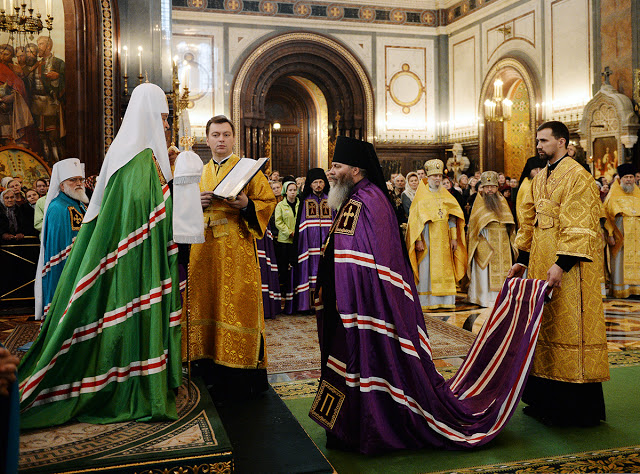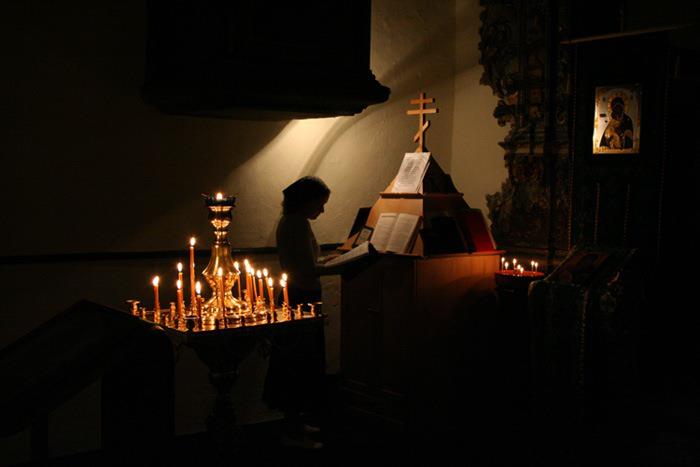
The core, the sacramental heart and center of any Orthodox church is the altar, the Holy Supper, on which the greatest Sacrament on earth takes place – the Sacrament of the Holy Eucharist. How does the consecration of the Orthodox altar, commonly referred to as the Lord’s Table, happen and what can we get from this?
The first part of the rite. During the consecration of the altar, the hierarch primarily blesses his co-servants and sprinkles the pillars of the altar with holy water. Then the bishop pours a boiling composition called wax mastix on the corners of the pillars crosswise. Wax mastix is a special mixture consisting of wax, mastic compound, incense, aloe, crushed marble and other fragrant substances. This mixture is cooled down by the breath of the clergy and, together with the nails, will serve as binding between the base and the board of the Lord’s Table. Symbolically wax mastix means fragrances with which the Body of the Savior was anointed before His burial. After a short prayer to God about the unjudged performing of a sacred rite, the bishop sprinkles the board and lays it on the pillars of the altar, while choir is singing Psalm 145 (“Thou givest them their meat in due season”) and Psalm 23 (“Thou preparest a table before me”). Then the nails are consecrated and hammered into the pillars with the stones. After this, for the first time the veil is opened and the bishop, together with the clergy and all people, kneels down to pronounce a long prayer, where the archpastor, as King Solomon, asks to send the Holy Spirit and consecrate the altar and the whole church. The gates are closed and a great litany is proclaimed, with special requests for the consecration of the whole church and the altar in it. As we see, ordinary people unite with the metropolitan in his prayer; they are allowed and called for participation in the consecration of the altar and their church.

The second part of the rite, in which the ablution and anointing of the altar with Holy myrrh take place. The bishop consecrates the water and pours it on the Lord’s Table, while the choir sings Psalm 84. The altar is poured with red wine mixed with rose water (rodostamna) three times for the second time, while the metropolitan reads Psalm 51 and then the clergy rubs the rodostamna into the throne by their hands. And finally, the bishop anoints the altar with the Holy myrrh in the center, on all sides of the pillars, as well as in the place where the diskos and the Chalice will stand during the performance of the Eucharist. The choir sings Psalm 133 (“Behold, how good and how pleasant”), and the bishop proclaims “Alleluia” three times after every anointment”. After the anointing of the altar, the metropolitan proclaims: “Glory to You, Holy Trinity, Our God, forever and ever!”
The third part of the rite, during which the altar is covered with the holy vestments. Firstly, they put so called underwear – katasarka (literally means what is closed to the body) – on. Katasarka is girded with a rope in such a manner that there is a cross on all sides. The choir sings Psalm 132. Then they put inditia (richly decorated robe) on while the choir sings Psalm 93 (“The Lord reigneth, he is clothed with majesty”) and the sprinkled liturgical objects are placed on the altar. For the first time a candle is lit and set at the above the Altar Stone.
The rite of altar’s consecration is quite complex, and colourful in Byzantine style. It is not easy to understand the symbolism of this rite, if you do not pay attention to its similarity with the sacrament of the Holy Baptism. By remembering Apostle Paul’s words, “your body is the temple of the Holy Ghost which is in you” (1 Corinthians 6:19), we can understand the point of the consecration of the altar, as the main part of church. Mastic compound is our anointing with the oil of joy, hammering is our desire to be crucified with Christ, which leads us to Holy Baptism. Ablution with water is a sign of our Baptism, which leads us further to the Eucharist – the ablution of the altar with rodostamna. All this is due and for our life to be filled with the Holy Spirit – the consecration of the Lord’s Table by the Holy myrrh. The vestments of the altar are our baptismal vestments, testifying of our coming back to the merciful Father. So, the knowledge of how the altar is sanctified in the Church is intended to teach us responsibility for our life, consecrated by baptism, is intended to show how reverently we should treat our bodies, the temples of the Holy Ghost, because the consecration of church occurs solely for the sake of the Holy Eucharist, which will be performed on our altars for the sanctification of our souls and bodies, for our salvation.



